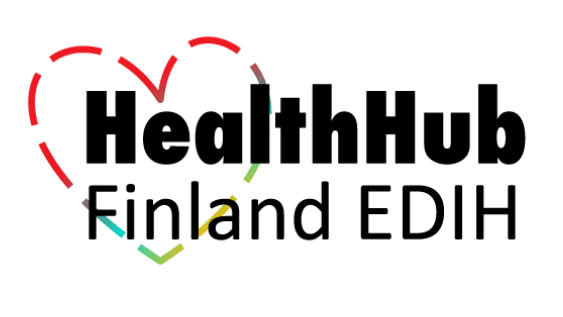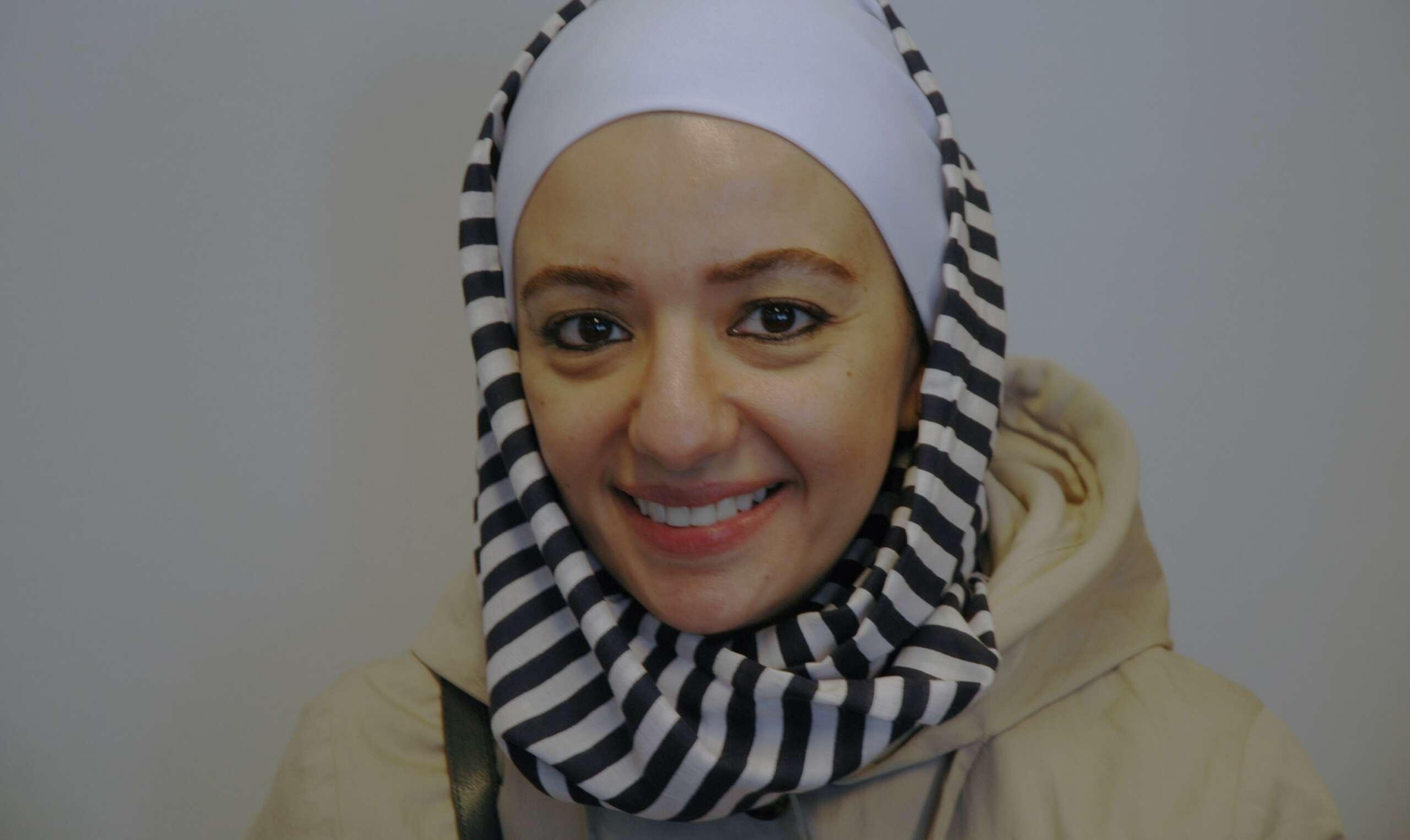Know-How in AI, Data Analytics and Proof-of-Concept Piloting
Customer Account Manager Nahed Al Sadi began her journey in Kajaani University of Applied Sciences (KAMK) in Aprill 2022. We chatted with her about what unique strengths and resources KAMK offers to digital healthcare companies.
Tell us briefly about Kajaani University of Applied Sciences, what services does it offer?
Kajaani University of Applied Sciences (KAMK) is a higher education institute of approximately 3300 students with a strong research and development orientation to support regional development, develop customers’ products, services and processes and conduct needs-based applied research.
Approximately 90-100 development projects are implemented each year, and they are mainly funded by the EU through various funding programs. RDI activities form about a quarter of Kajaani University of Applied Sciences’ turnover and employee work years. The activities of KAMK RDI are founded on robust specialist expertise, well-functioning partnerships and highly skilled expertise in project work.
KAMK offers know-how in AI and data analytics as well as proof-of-concept piloting services. With their expertise and support, partners can trial AI before needing to make significant investments in development activities.
Kajaani is home to CSC`s supercomputers which KAMK will help companies utilize and get to know what supercomputing can provide them, how to collect data, or how to do data analytics.
KAMK is also part of HHFIN’s business development services, offering clients strategy or internationalization consultancy services to achieve growth together with HHFIN.
How long have you been a part of the HealthHub Finland (HHFIN) initiative? What is your background?
I began my journey at KAMK in April 2022, assuming roles as a Market Research Analyst for the hologram project and as project expert for “AI Edu” and “AIKA Ecosystem” projects. My involvement with the HHFIN EDIH project commenced in January 2024.
With four years of experience at the esteemed King Hussein Cancer Center in Jordan, where I specialized in management and patient care within a health hub, I bring valuable insights. Additionally, I have nine years of diverse experience spanning administrative and educational domains in both Jordan and Finland.
My educational background includes an MBA from the German Jordanian University, with a specialization in management.
What was your organizations motivation to join the HealthHub Finland EDIH consortium?
To enhance the AIKA Ecosystem´s* service within the healthcare sector, we aim to employ an AI-driven strategy, foster digitalization, and bolster networking capabilities. Furthermore, we seek to expand the reach of the AIKA Ecosystem through a comprehensive approach that integrates these elements seamlessly.
*Arctic Data Intelligence and Supercomputing Ecosystem in Kainuu
What are your future expectations for HealthHub Finland EDIH and where do you see HHFIN in the future?
In our expectation of the HealthHub Finland EDIH project´s future outcomes, we anticipate a significant improvement in work standards within the healthcare domain through the smooth integration of digital technologies. We also anticipate the expansion of professional networks, fostering collaborative efforts and knowledge sharing.
Crucially, we expect the project to play a pivotal role in facilitating the advancement of the medical sector by harnessing the potential of artificial intelligence (AI) and digital tools to optimize processes and drive the growth of Finnish medical enterprises, thereby paving the way for a more efficient and innovative healthcare landscape.
How did your organization begin its journey of providing services to support the development of digital healthcare solutions? What inspired your mission in this area?
In some ways it has been a natural progress. KAMK has a longstanding tradition of nursing education and significantly contributes to sustaining regional healthcare. Moreover, across various departments at KAMK, such as the School of Technology and Health, there is active involvement in research, development, and innovation initiatives.
Our team has been involved with regional technology business development for more than 10 years and expanding the know-how towards digital health solutions is a progression of that. It has been boosted by regional infrastructure development, like the supercomputers.
As a university, what unique strengths and resources do you offer to digital healthcare companies?
Our background and research and development projects experience in data, AI, and startups is something that we have worked a long time to create. Our team combines technology and business development expertise, and we have been long involved with SME companies and studying the characteristics they need to grow their businesses.
Our team has AI and data analytics staff, and we collaborate closely with CSC, the organization responsible for operating the LUMI supercomputers, MAHTI and PUHTI here at Kajaani’s Renforsin ranta area.
We also want to serve our customers as well as we can, looking to make collaborations straightforward and enjoyable. It helps that our team members have lots of experience in internationalization, sales, and customer service in different industries. We are happy to discuss and meet people.
What types of digital healthcare projects or companies do you typically collaborate with? How do you adapt your services to meet their specific needs and challenges?
Various, and in our other initiatives such as the AIKA ecosystem (DIH) we work across multiple industries. In data analytics and AI projects we don’t have to rely on specific technologies or algorithms, but we consider the needs case specifically in each proof-of-concept pilot (service).
Can you share a specific example of how your services have contributed to the success of a digital healthcare project or company in the past? What outcomes were achieved?
We have worked to create innovation development projects by studying the business potential of regional health and wellness innovations, particularly with the University of Jyväskylä`s Vuokatti Sports technology unit. In addition, many of our research studies have involved interviews and discussions with digital healthcare companies, allowing us to learn more about them.
What future expansions or initiatives do you envision for your services in the digital healthcare domain? How do you plan to continue making a meaningful difference in the industry?
The capacities of supercomputing in Kainuu have a lot of potential for developing business solutions or optimizing production and service concepts. We probably have just glimpsed of what it can do so far.
As a university, how do you stay updated with the latest trends and innovations in the digital healthcare industry to ensure the services you offer remain relevant and effective?
This is an important part of our work. As a team we have been involved in a number of different projects which allows for creating synergies in studying trends of technologies like AI. Visiting events here in Finland and abroad is crucial as well, to recognise what is in fact already on the markets and to extend our network.
As a university, how do you ensure that your services remain accessible and affordable for digital healthcare startups or smaller companies with limited budgets?
Currently this works very well in the projects we have, specifically our part in HealthHub Finland. In other KAMK projects, companies can receive business digitalization training for example with some small de minimis use. Also, we have a number of events per year for technology trends, inspiration and success stories which are generally free of charge for companies to attend.
Contact our business advisors to learn how HealthHub Finland can support your company.
Learn more about Kajaani University of Applied Sciences.
The EDIH initiative is co-funded by the European Union and Business Finland.
Disclaimer:

“Funded by the European Union. Views and opinions expressed are however those of the author(s) only and do not necessarily reflect those of the European Union or European Commission. Neither the European Union nor the granting authority can be held responsible for them.”
HealthHub Finland EDIH
HealthHub Finland brings together experts and resources from the leading health ecosystems in Finland. Who are they and what do they bring to the table?
In this article series we shed light on the actors behind the HealthHub Finland European Digital Innovation Hub and how partner organisations accelerate digital innovation in companies.
Partners:
- Business Turku (coordinator),
- Business Oulu,
- Business Tampere,
- Finnish Biobanks (FINBB),
- KAMK Kajaani University of Applied Sciences,
- Kuopio Health,
- University of Oulu,
- Varha – The wellbeing services county of Southwest Finland.

